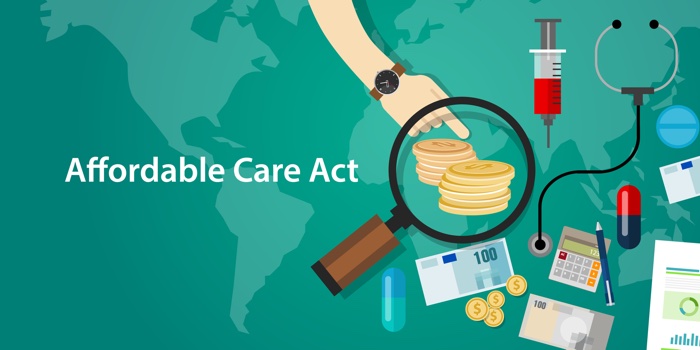THURSDAY, NOVEMBER 12, 2020

Essential Health Benefits consist of ten categories of items and services required on all individual and small group plans and must be offered at no dollar limits on every plan under the Affordable Care Act (ObamaCare).
All major medical plans sold on the Health Insurance Marketplace, Non-marketplace Plans, small group plans, and Government healthcare options like Medicaid and Medicare started January 1st, 2014 or later offer services from at least ten categories of Essential Benefits regardless of cost. You can buy coverage that includes these benefits during each year’s open enrollment period. Open enrollment is from November 1st through December 15th.
In general, Essential Health Benefits are types of care you need to prevent and treat sickness.
List of Ten Essential Health Benefits
The Affordable Care Act’s Ten Essential health benefits include:
- Ambulatory patient services (Outpatient care). Care you receive without being admitted to a hospital, such as at a doctor’s office, clinic or same-day “outpatient” surgery center. Also included in this category are home health services and hospice care (note: some plans may limit coverage to no more than 45 days)
- Emergency Services (Trips to the emergency room). Care you receive for conditions that could lead to serious disability or death if not immediately treated, such as accidents or sudden illness. Typically, this is a trip to the emergency room, and includes transport by ambulance. You cannot be penalized for going out-of-network or for not having prior authorization.
- Hospitalization (Treatment in the hospital for inpatient care). Care you receive as a hospital patient, including care from doctors, nurses and other hospital staff, laboratory and other tests, medications you receive during your hospital stay, and room and board. Hospitalization coverage also includes surgeries, transplants and care received in a skilled nursing facility, such as a nursing home that specializes in the care of the elderly (note: some plans may limit skilled nursing facility coverage to no more than 45 days).
- Maternity and newborn care. Care that women receive during pregnancy (prenatal care), throughout labor, delivery and post-delivery, and care for newborn babies.
- Mental health services and addiction treatment. Inpatient and outpatient care provided to evaluate, diagnose and treat a mental health condition or substance abuse disorder . This includes behavioral health treatment, counseling, and psychotherapy. (note: some plans may limit coverage to 20 days each year. Limits must comply with state or federal parity laws.)
- Prescription drugs. Medications that are prescribed by a doctor to treat an illness or condition. Examples include prescription antibiotics to treat an infection or medication used to treat an ongoing condition, such as high cholesterol. At least one prescription drug must be covered for each category and classification of federally approved drugs, however limitations do apply. Some prescription drugs can be excluded. “Over the counter” drugs are usually not covered even if a doctor writes you a prescription for them. Insurers may limit drugs they will cover, covering only generic versions of drugs where generics are available. Some expensive drugs will need special approval.
- Rehabilitative services and devices – Rehabilitative services (help recovering skills, like speech therapy after a stroke) and habilitative services (help developing skills, like speech therapy for children) and devices to help you gain or recover mental and physical skills lost to injury, disability or a chronic condition (this also includes devices needed for “habilitative reasons”). Plans have to provide 30 visits each year for either physical or occupational therapy, or visits to the chiropractor. Plans must also cover 30 visits for speech therapy as well as 30 visits for cardiac or pulmonary rehab.
- Laboratory services. Testing provided to help a doctor diagnose an injury, illness or condition, or to monitor the effectiveness of a particular treatment. Some preventive screenings, such as breast cancer screenings and prostrate exams, are provided free of charge.
- Preventive services, wellness services, and chronic disease treatment. This includes counseling, preventive care, such as physicals, immunizations and screenings, like cancer screenings, designed to prevent or detect certain medical conditions. Also, care for chronic conditions, such as asthma and diabetes.
- Pediatric services. Care provided to infants and children, including well-child visits and recommended vaccines and immunizations. Dental and vision care must be offered to children younger than 19. This includes two routine dental exams, an eye exam and corrective lenses each year.
While all qualified plans must offer the ten essential benefits, the scope and quantity of services offered under each category can vary.
Posted 4:46 PM
No Comments
Post a Comment |
|
Required
|
|
Required (Not Displayed)
|
|
Required
|
All comments are moderated and stripped of HTML.
|
|
|
|
|
|
NOTICE: This blog and website are made available by the publisher for educational and informational purposes only.
It is not be used as a substitute for competent insurance, legal, or tax advice from a licensed professional
in your state. By using this blog site you understand that there is no broker client relationship between
you and the blog and website publisher.
|
Blog Archive
2025
2024
2023
2022
2021
2020
2019
2018
|